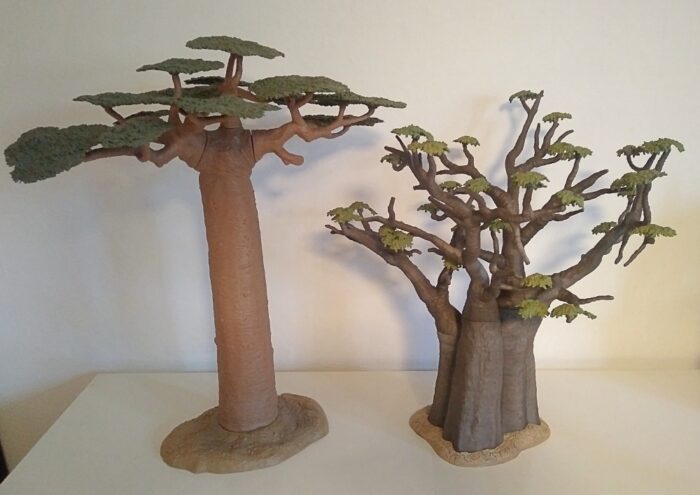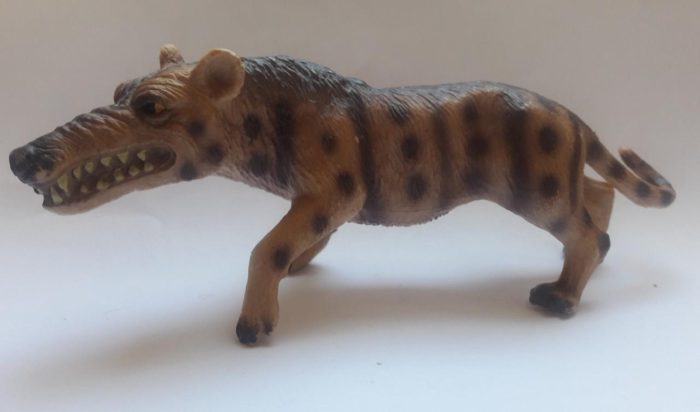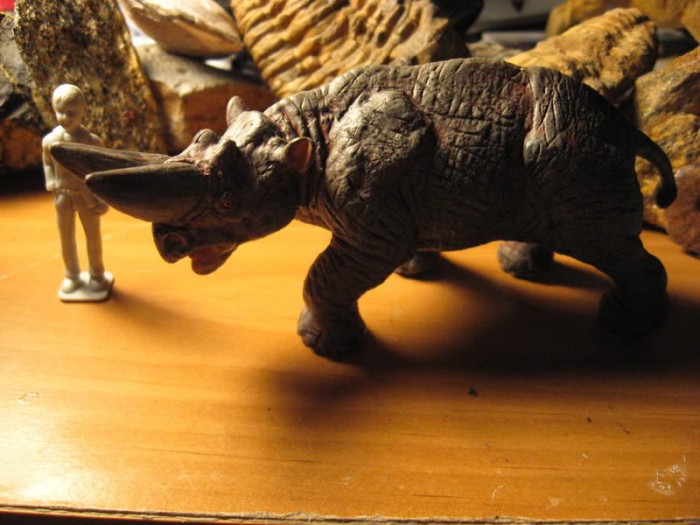The family of Baobabs is one of the most distinct and recognizable trees in the world. Eight species exist under the genus Adansonia, they are native to Subsaharaian Africa, Madagascar and Australia. The natural history of Baobabs is somewhat clouded and methods as molecular clocking yield debatable results.
Age: Eocene
Review: Ancient Fossils (Toob by Safari Ltd)
Review: Andrewsarchus (Bullyland)
Review: Andrewsarchus (CollectA)
Review: Andrewsarchus (Play Visions)
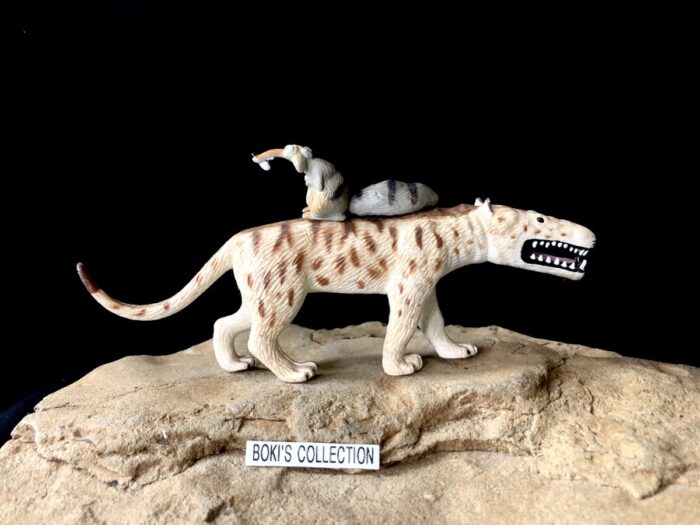
Part 3 of 4 – Large Play visions Prehistoric mammals
Dust funnels swept across the dry and hot landscape. It’s been months since the last rain and the vegetations, once lush, has now turned brown. Animals that inhabit this environment are under tremendous stress as they seek out food and shelter from the exhausting heat.
Review: Andrewsarchus (Prehistoric Life Collection by Safari Ltd)
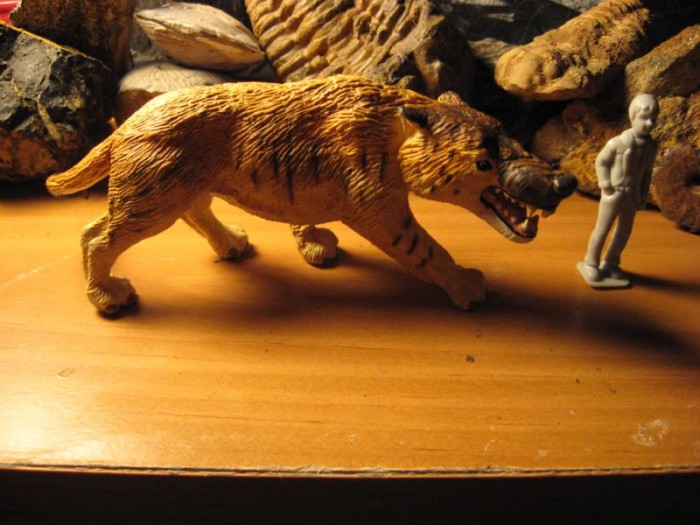
Review: Arsinoitherium (CollectA)

Released by CollectA in 2014, this Arsinoitherium toy measures just about 18.5 cm long from the tips of its horns to the end of its tail.
Review: Arsinoitherium (Prehistoric Life Collection by Safari Ltd)
Review: Basilosaurus ( CollectA)
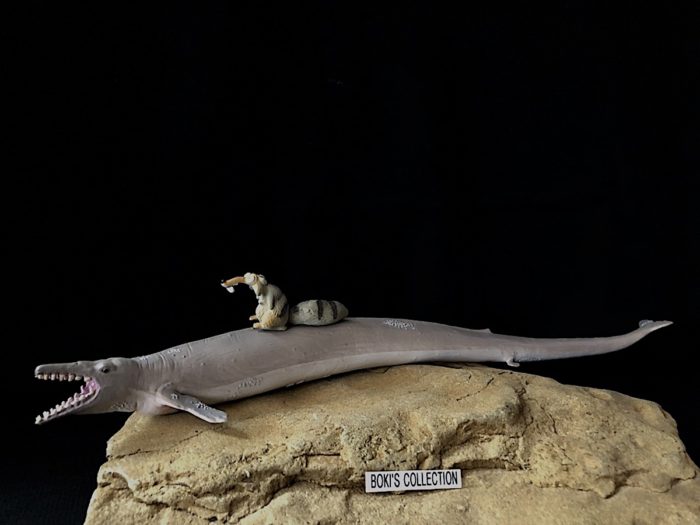
Happy New Year everyone! this will be my first review for 2019!
Back in the late Eocene, the world’s oceans were a much warmer, shallower than they are today. If you took a stroll along the beach back then, you may think that you have stepped into some hidden tropical paradise somewhere in the tropical pacific.
Review: Basilosaurus (Age of the Dinosaurs by PNSO)

Many millions of years ago, the vast Tethys Sea covered what would one day be the deserts of the Middle East and other large parts of the world. The demise of the mighty aquatic marine reptiles, along with the dinosaurs at the end of the Cretaceous opened up these vast oceans for a new cast of characters to take center stage and dominate.
Review: Basilosaurus (Recur)

When anatomist Richard Harlan was presented with the fossil remains of a huge marine creature in 1834, he thought it must have been a reptile like Plesiosaurus or Mosasaurus, and therefore bestowed upon it the name Basilosaurus, “king lizard.” But when Sir Richard Owen later examined the teeth, he noted their double-rooted nature, which is a signature of mammals.
Review: Brontotherium (=Megacerops) (Mojö Fun)
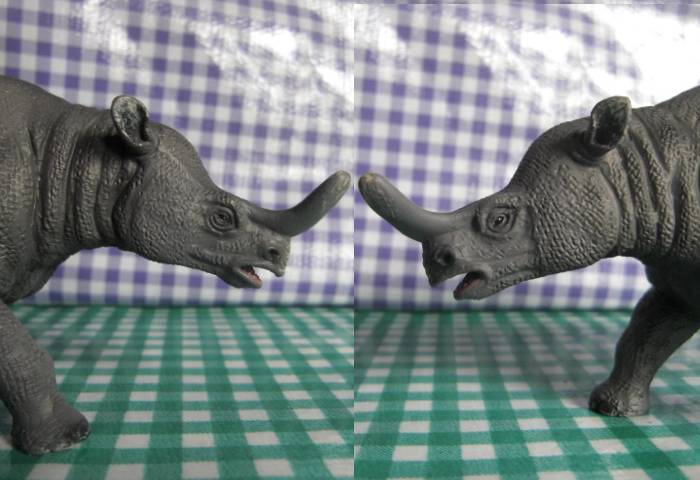
In 2012, CollectA released a pretty nice non-conventional toy model of a Megacerops (=‘Brontotherium’). This was good news for prehistoric mammal collectors. But in 2013, Mojö surprised us with the release of four prehistoric mammals.

